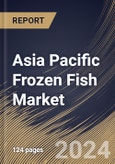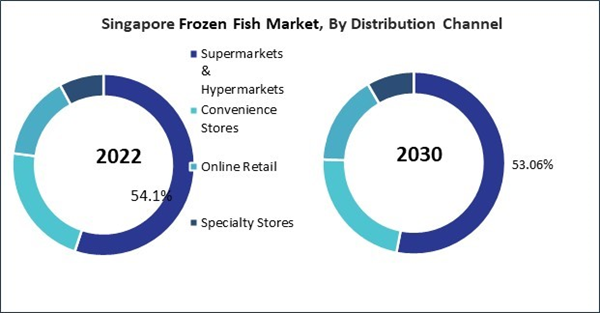Atlantic salmon, known for its mild flavor and tender texture, is a prominent choice among consumers seeking a versatile fish option suitable for various cooking methods. Pacific salmon varieties such as sockeye, coho, and chinook offer distinct flavors and characteristics, appealing to consumers looking for richer, more robust profiles in their seafood dishes. Therefore, the Singapore market consumed 5.8 kilo tonnes salmon in 2022.
The China market dominated the Asia Pacific Frozen Fish Market, by Country in 2022, and would continue to be a dominant market till 2030; thereby, achieving a market value of $5,889.5 Million by 2030. The Japan market is registering a CAGR of 6.8% during (2023 - 2030). Additionally, The India market would experience a CAGR of 8% during (2023 - 2030).
The adoption of frozen fish has been significantly influenced by changing consumer perceptions. Traditionally, consumers may have harbored concerns about the quality and freshness of frozen seafood compared to its fresh counterparts. However, technological advancements in freezing techniques, such as rapid and cryogenic freezing, have bridged the gap between fresh and frozen seafood, leading to a shift in consumer attitudes. As a result, there is a growing acceptance of frozen fish as a convenient and reliable option that offers year-round access to various seafood.
One of the primary drivers behind the adoption of frozen fish is its unparalleled convenience to consumers and retailers. Frozen fish allow for extended shelf life without compromising quality, enabling retailers to manage inventory more efficiently and reduce the risk of spoilage. Consumers, in turn, appreciate the flexibility of having a diverse selection of seafood available at their convenience, irrespective of seasonal variations in fish availability.
According to Invest India, the fisheries sector expanded 8% per year from FY 2013-14 to FY 2021-22, with record fish production of 16.25 MMT in FY 2021-22. The growth of fisheries and aquaculture in India has increased fish production. Therefore, due to the above-mentioned factors, the frozen fish market will grow significantly in this region.
Based on Distribution Channel, the market is segmented into Supermarkets & Hypermarkets, Convenience Stores, Online Retail, and Specialty Stores. Based on Type, the market is segmented into Salmon, Tuna, Shrimp, Cod, Tilapia, and Others. Based on countries, the market is segmented into China, Japan, India, South Korea, Singapore, Malaysia, and Rest of Asia Pacific.
List of Key Companies Profiled
- Dongwon Enterprises Co. Ltd.
- Mowi ASA
- Zoneco Group Co., Ltd.
- F.C.F. Fishery Co., Ltd.
- Nippon Suisan Kaisha, Ltd.
- Chicken of the sea International (Thai Union Group PLC)
- Nueva Pescanova, S.L (Abanca Corporación Bancaria, S.A.)
- Tassal Group Limited
- High Liner Foods
- SalMar ASA (Kvera AS)
Market Report Segmentation
By Distribution Channel (Volume, Kilo Tonnes, USD Billion, 2019-2030)- Supermarkets & Hypermarkets
- Convenience Stores
- Online Retail
- Specialty Stores
- Salmon
- Tuna
- Shrimp
- Cod
- Tilapia
- Others
- China
- Japan
- India
- South Korea
- Singapore
- Malaysia
- Rest of Asia Pacific
Table of Contents
Companies Mentioned
- Dongwon Enterprises Co. Ltd.
- Mowi ASA
- Zoneco Group Co., Ltd.
- F.C.F. Fishery Co., Ltd.
- Nippon Suisan Kaisha, Ltd.
- Chicken of the sea International (Thai Union Group PLC)
- Nueva Pescanova, S.L (Abanca Corporación Bancaria, S.A.)
- Tassal Group Limited
- High Liner Foods
- SalMar ASA (Kvera AS)









